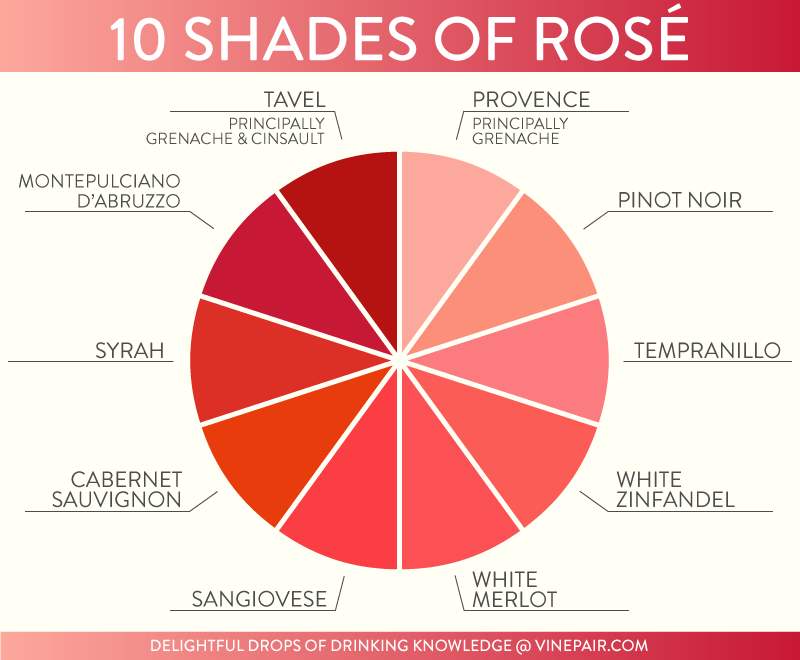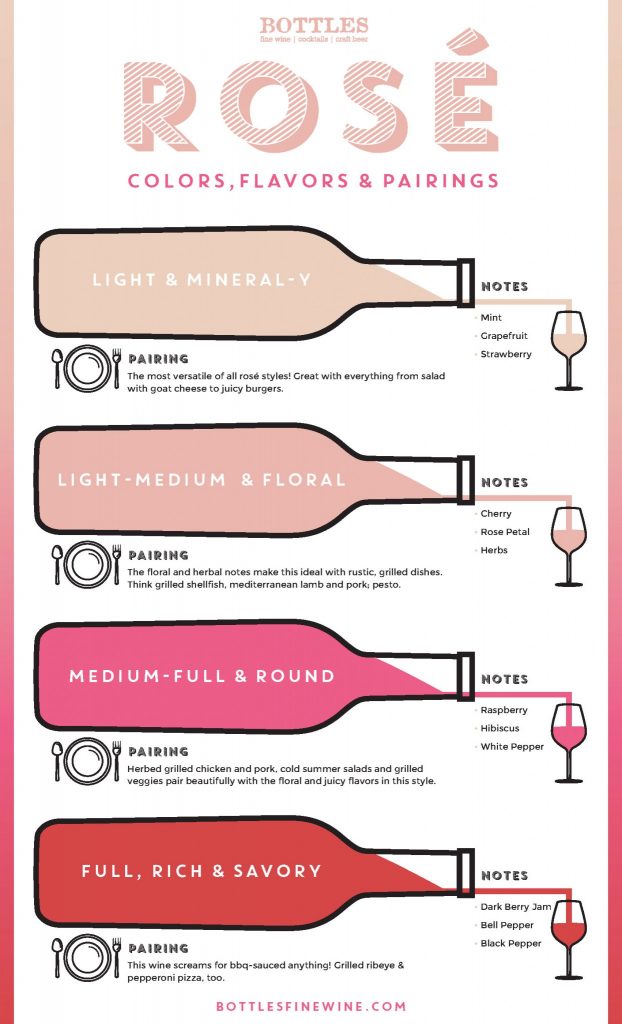
The primary flavors of dry rosé wines are red fruit, flowers, citrus, and melon, with green notes on the finish such as grass or celery. The varietal used to make the wine will greatly influence flavour. For example, a deeply-colored southern Italian grape such as Negramaro will offer up richer aromas such as ripe strawberry and raspberry with complex floral and mineral notes, where as a lighter zippier style from the Loire Valley in France can offer stone fruit and citrus notes along with vibrant acidity and minerality.Sweeter rosés usually labeled as White Zinfandel, White Merlot or Pink Moscato are made by not fermenting all the sugar into alcohol and are often associated with high-volume, bulk wine. The sales of this style has declined over the years while premium dry rosés rise in popularity.Sparkling rosé sales spike in warmer months as well as during the holidays and can include high-end Champagne or Franciacorta rosé or more affordable options such as Cava or sparklers from the new world.
If you wore a blindfold while tasting rosé it would be impossible to guess the color just by the taste.
Wine color dark to light by refinery29
A rosé wine’s color varies depending on several factors: the amount of skin contact during fermentation, whether there was contact with oak and the specific grapes used. The most important may be the grape variety. Grapes with thicker skins provide more potential for color extraction.
Sweetness, however, has little to do with the skin contact and color. Sweetness happens in a couple of different ways. Those wines with the horrible reputation of tasting like candy are usually the result of the winemaker’s actually adding sugar to the finished wine. Those with slight sweetness and balance are the result of the fermentation being stopped before the sugar has been exchanged for alcohol.

Not all pale rosé wines are dry and light just the same as not all dark rosé wines are sweeter. Many assume the color and sweetness correlate but the deeper the color just means the wine had more grape skin contact or it was made from a thick-skinned grape variety. Tannin, on the other hand, is a little different. Because darker rosé wines have spent more time on the skins they will generally pick up more tannic structure and be fuller-bodied styles.
Dry Rosé Wine
This style of Rosé wine is the most common style produced today around the world. France and Spain lead the way in Rosé wine production and it’s typical to see a blend of 2-3 different grape varieties.
Sweet Rosé Wine
Any Rosé wine can be produced in a sweet style by simply not fermenting all the sugar into alcohol. However, it is not as common and mostly reserved for bulk wine production.
